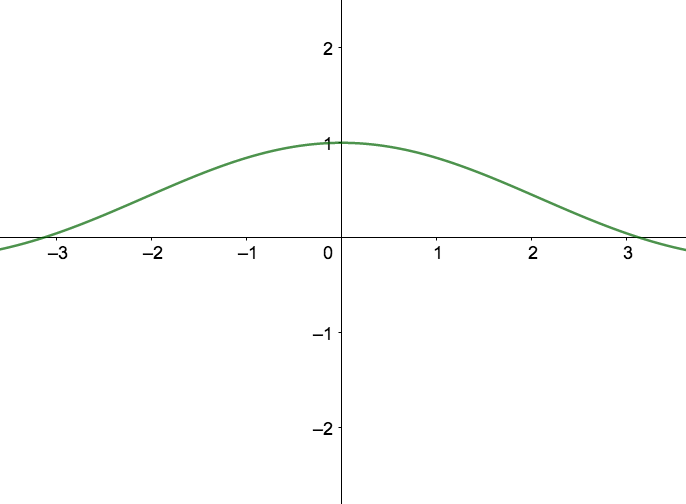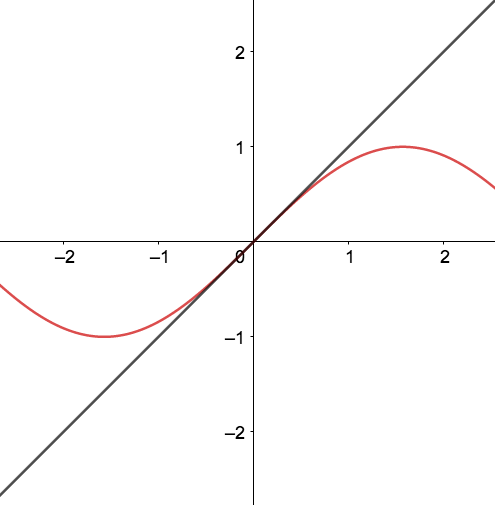Yesterday in Calc BC we were discussing L’Hopital’s Rule. I have mixed feelings about this conversation every year because it feels like this powerful idea about comparing rates of change, but I know many (most?) see this as a simple mechanical process. Of course, there are always cases where it gets misapplied just because it is a fun new tool. What is that old saying about a hammer? If all you have is a hammer, then everything looks like a nail, right? Suddenly, every rational function limit should be subjected to L’Hopital. A couple of years ago, I finally settled on a way that feels comfortable to start with the old classic limit of sin x / x as x approaches 0. GeoGebra is a good friend here. 
We all agree pretty quickly that it is clear that there is a limit here, despite the fact that the idea of dividing 0 by 0 causes us discomfort. The breakthrough I had a couple of years ago (and I am guessing many of you have had it as well) is to next look at the graphs separately. 
So, the conversation now centers on the fact that we can only see one graph as our eyes near the origin. An interesting debate arose. Students were convinced that these graphs clearly intersected each other, no question there. What became a bit fo a debate was whether there might be multiple points of intersection. I had the idea of creating a new function. If we look at the graph of y = sin x – x and see that there is simply one root we can put the question to rest. Before I could suggest this I was trying to get someone to voice my idea. Instead, one of my students (Jake S) made a contribution to the conversation. He said he was thinking about the inverse sine graph. He pointed out that if we snip off a piece of the sine graph we were looking at from the minimum on the left of the y-axis to the first Max on the right of the axis we would have a function that was constantly increasing. Since it started off above the line (which is moving at a constant rate) and then ends up below it, it seemed clear to him that there was only going to be one point of intersection. I was kind of floored by the connections he was making on the fly. I do not expect my students to think of inverse trig functions without being directly urged to and even then there is great reluctance. I did not expect an argument that had this kind of subtlety on the fly in the class conversation. I have not thought deeply enough about his argument to determine whether there might be some odd functions that defy his thinking, but this graph sure did not.
I say this on this space periodically and I say this in my life to anyone willing to listen on a regular basis – I am spoiled by the kids in this BC class. I don’t mean to imply that I do not enjoy my other classes. I do. I’m just generally spoiled (fortunate / blessed / lucky / fill in the blank) I get a kick out of all of my classes at different times for different reasons. What I reliably get from teaching the scholars in BC is a daily reminder that I still have an awful lot of math to learn. I know that I know things that they do not yet, but I also know that they are coming to class with questions and insights every day that blow my mind.